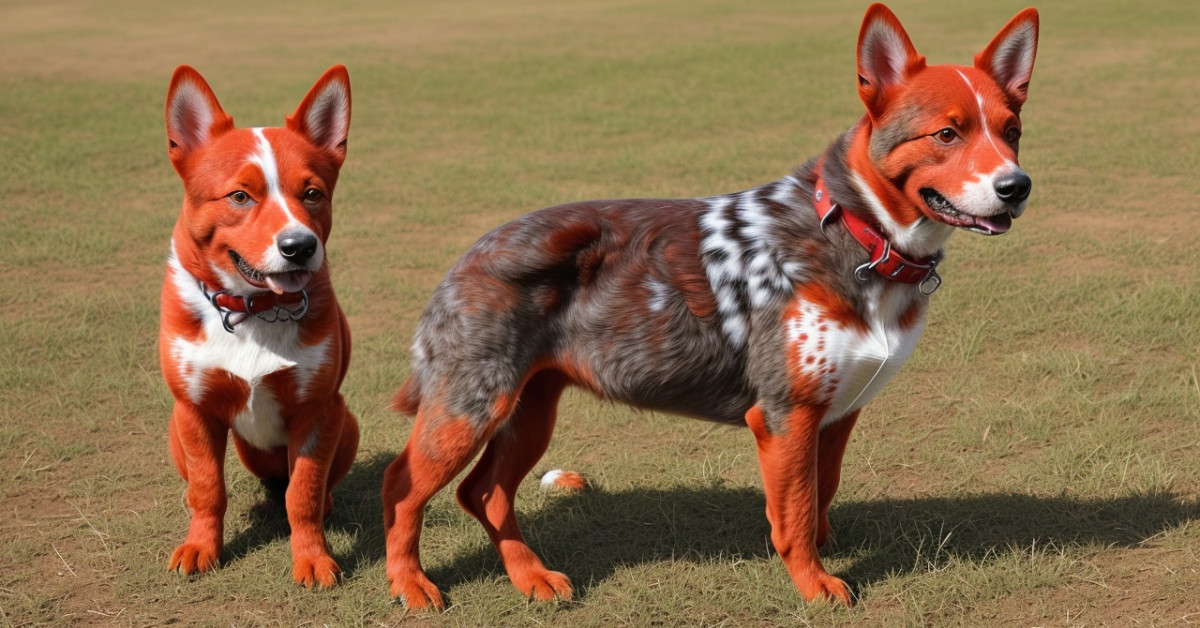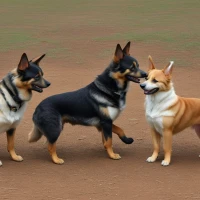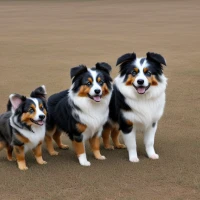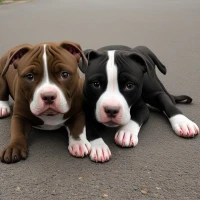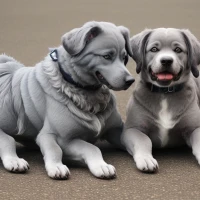Red Australian Cattle Dog, the Red Heeler is a robust breed that is of medium size. They were originally developed to herd livestock across long distances. There are both red and blue Australian Cattle Dogs, or Heelers, but they’re the same breed—the only difference is the color of their coats. Here, we focus on the Red Heeler and what exactly should be expected when owning such a hardy animal.
Breed Overview

Australian Cattle Dogs, also known as Red Heelers are an hardworking breed renowned for their skill, in herding. These active sized dogs have a red coat though they can also be found in a blue color variation.
Originating in the century this breed was specifically bred in Australia to withstand working conditions and excel at cattle herding over long distances. They have roots tracing back to a mix of Australian Dingoes and herding dogs from England showcasing a balance of endurance, toughness and agility.
A key figure in the breeds history is Thomas Hall, who initiated the breeding by crossing Dingoes with Blue Merle Highland Collies. This laid the groundwork for the breeds development. Subsequent enhancements involved incorporating Dalmatian and Black and Tan Kelpie bloodlines to enhance their herding abilities strengthen their protective instincts. Establish their unique coat patterns.
Red Heelers are known for their intelligence and self reliance which can be both an asset and a challenge. While they are learners they require stimulation to prevent undesirable behaviors. These characteristics make them well suited for working roles. May pose difficulties for pet owners.
Due, to their nature and loyalty australian shepherd red heeler mix excel as guard dogs. They exhibit playful behavior within their family circle. However it’s important for potential owners to know that Red Heelers require exercise and a significant role, within the family to prevent boredom and potential behavior problems.
While they are typically healthy like purebred dogs Red Heelers may be prone to conditions like hip dysplasia or progressive retinal atrophy. Regular vet check ups and an active lifestyle can help manage these issues.
In essence the history of Red Heelers shaped by breed mixes and focused breeding for working abilities has produced a dog breed that’s both emotionally resilient and physically tough. This makes them well equipped to tackle tasks with unwavering dedication. Positioning them as partners, in both work and life.
Red Heeler Characteristics

Red Heelers, also known as Australian Cattle Dogs are a breed valued for their smarts, vigor and faithfulness. Originally bred to guide cattle through landscapes, over distances they boast a strong physique and an alert gaze.
Distinctive features of Red Heelers include their eye catching coat that sets them apart. Their double layered coat acts as a shield against weather conditions with the outer coat offering protection and the inner one providing warmth. These dogs exhibit endurance. Thrive on both physical activity and mental challenges—a legacy from their Dingo lineage blended with breeds like the Dalmatian and Blue Merle Collie.
Renowned for forming connections with their owners Red Heelers make companions for active individuals or families. Due to their roots as herding dogs they have a instinct and may be cautious around strangers making them effective guard dogs. While they might display herding tendencies like heel nipping, proper training and socialization can help manage behaviors.
Red Heelers played a role, in the growth of the beef industry by adapting well to the challenging environments of the Australian outback. Throughout history their ability to adapt to environments and perform roles beyond herding, such, as search and rescue agility sports and obedience highlights the versatility of these dogs.
Due, to their intelligence and problem solving skills Red Heelers need firm training starting from an age. A trained Red Heeler is obedient, loyal and able to grasp a range of commands. Their high energy levels and intelligence also suggest that they can get restless and display behavior if not adequately engaged.
The Earliest Records of the Red Heeler in History
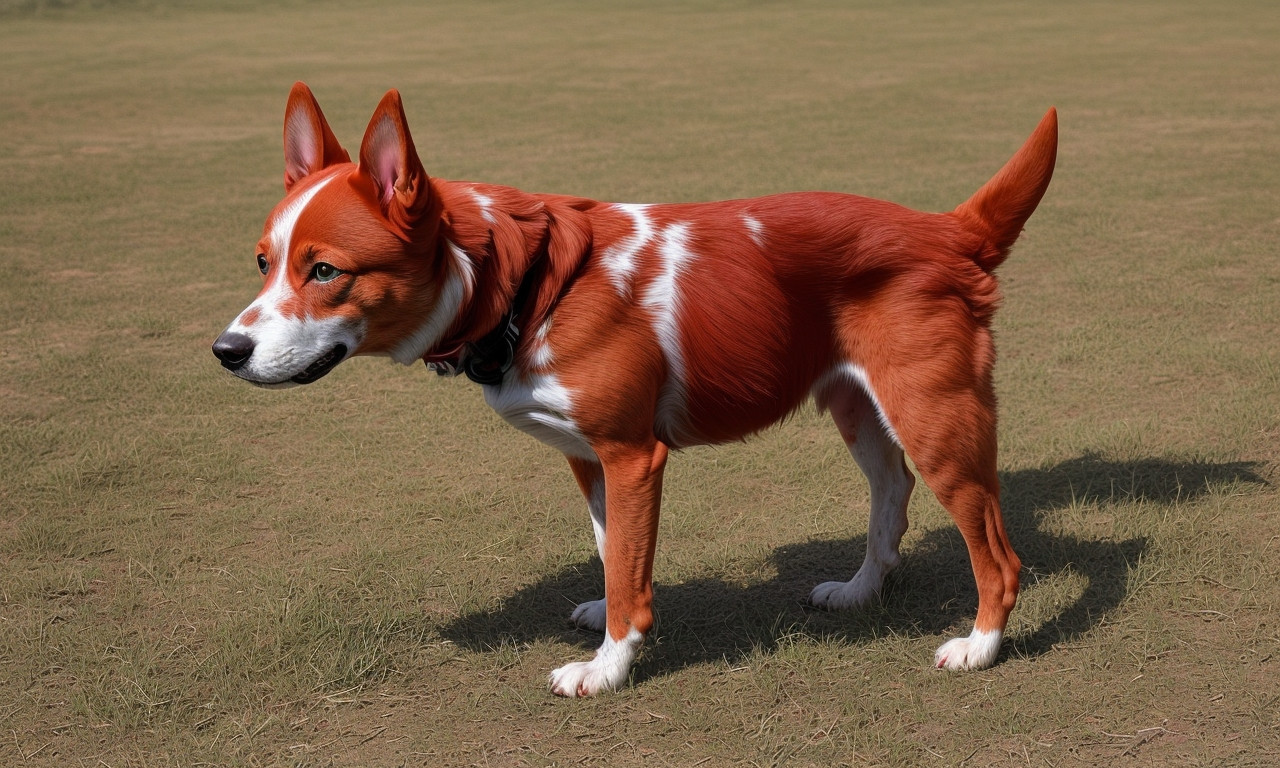
The Red Heeler, also known as the Australian Cattle Dog hails from Australia where it was bred to herd cattle across terrains, for distances. This breed was carefully crafted over time with the aim of producing an effective herding companion.
Records indicate that this breed has roots tracing back to the century when Australian landowners sought a canine companion capable of thriving in the unforgiving conditions of the outback while managing large herds of cattle on vast ranches. These requirements laid the foundation for what became recognized as the Australian Cattle Dog.
The breeds origins can be traced back to Thomas Hall, who crossed domesticated dingoes with blue merle collies resulting in what was referred to as “Halls Heelers.” These dogs gained popularity among cattle herders for their work ethic, intelligence and determination.
George Elliott from Queensland played a role in refining the breed by introducing Dalmatian and black and tan Kelpie into its lineage. The addition of genes gave rise to the breeds speckled coat pattern and potentially enhanced its social nature and affinity, towards horses making it a versatile farm dog. The influence of the Kelpie breed is believed to have enhanced the herding instincts of the Red Heeler.
The term “Red Heeler” specifically denotes the red color variation of the Australian Cattle Dog. This breed is recognized for two color variations; speckle and blue speckle with the red type acquiring its unique hue, from genes inherited from Dalmatian and Kelpie crosses.
Formal recognition of this breed occurred towards the end of the century. In 1893 Robert Kaleski initiated breeding programs for these dogs. Established the breed standard, which was subsequently embraced by kennel clubs. It wasn’t until around mid 20th century that this breed gained acknowledgment beyond Australia with registration by the American Kennel Club in 1980.
Throughout their heritage Red Heelers have been commended for their capacity to work autonomously and make decisions. They are famed for their nipping at cattle heels to steer them a behavior that led to their moniker “heeler.”
This particular breed has been pivotal, in Australias past. Has evolved into a sought after companion dog. Their high energy levels, intellect and loyalty have endeared them to dog lovers who can cater to their exercise needs and mental stimulation requirements. Throughout their history of being working dogs Red Heelers have shown versatility by excelling in tasks such, as search and rescue missions, therapy work and active participation in dog sports.
How the Red Heeler Gained Popularity
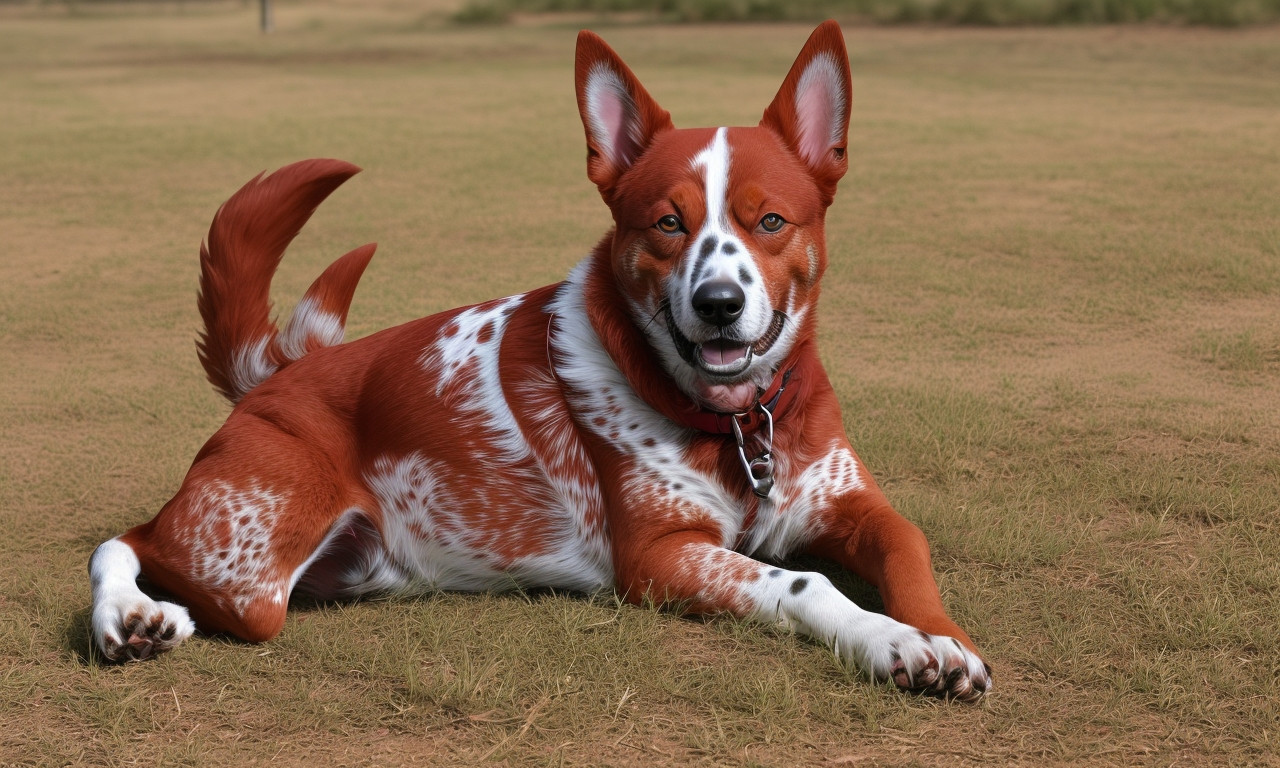
Australian Cattle Dogs, commonly known as Red Heelers are renowned for their smarts, vitality and devotion. Their fame stems from their herding abilities, adaptability and unique looks.
Their roots can be traced back, to the 1800s in Australia. European settlers required a canine that could withstand the conditions and harsh landscapes while herding cattle across long distances. The breed emerged from crosses between dingoes with sleek blue merle Collies, followed by Dalmatians and black and tan Kelpies. This resulted in a dog with the herding instinct, endurance and durability that suited the settlers needs.
The red or blue coat of the Red Heeler served as both camouflage in the wilderness and protection against extreme weather conditions. Their red hue set them apart from herding breeds initially earning them the moniker “Red Heeler.”
Their popularity soared as they showcased their versatility by excelling not in herding but in guarding and providing unwavering companionship. It was observed that a trained Red Heeler could perform tasks to several men. Word of their work and adaptability spread far and wide leading to an increase in their numbers, within Australia and globally.
Formal Recognition of Red Heeler

The Red Heeler, also known as the Australian Cattle Dog, is a breed that has become synonymous with grit, intelligence, and exceptional herding ability. Originating from Australia in the 19th century, the Red Heeler was created through a series of careful breedings, combining native Dingoes with Collies, Dalmatians, and other breeds, to endow this canine with the skills required to manage cattle over vast and diverse Australian landscapes.
The formal recognition of the Red Heeler came from the efforts to standardize the breed. Starting with these early breedings, the development of the Red Heeler’s lineage was a meticulous process of selecting dogs that evidenced desirable traits such as endurance, tenacity, and herding prowess. Pioneers in establishing the breed, like Thomas Hall, crossed dingoes with droving dogs, and over generations, the distinct blue or red speckled coat patterns emerged, giving birth to the names Blue Heeler and Red Heeler, respectively.
The Red Heeler was recognized as a breed in its own right in Australia when the Australian National Kennel Council (ANKC) added it to their registry. As interest in the breed grew internationally, other kennel clubs around the world also acknowledged the breed, further establishing their status in the canine hierarchy. For instance, the American Kennel Club (AKC) recognized the Australian Cattle Dog in 1980, which includes both the Blue and Red Heelers.
Understanding the breed’s traits is essential for potential owners. Red Heelers are known for their intelligence, loyalty, and energy. They require ample physical exercise and mental stimulation to stay happy and well-adjusted. These traits stem from their origins on Australian cattle farms where they adapted to the demanding job of herding livestock. Their pivotal history plays a significant role in their modern-day characteristics, making them suitable for active families or individuals who can offer plenty of engagement and activity.
It is their remarkable ability to work in sync with humans as herding partners that have cemented the Red Heeler’s reputation. Their formal recognition not only symbolizes their capability as working dogs but also ensures the preservation and continuation of their breed standard, allowing future generations to benefit from their remarkable attributes. With a history rooted deeply in practicality and success in livestock management, the Red Heeler stands today as a testament to the power of selective breeding and the human-canine bond.
Top 3 Unique Facts About the Red Heeler
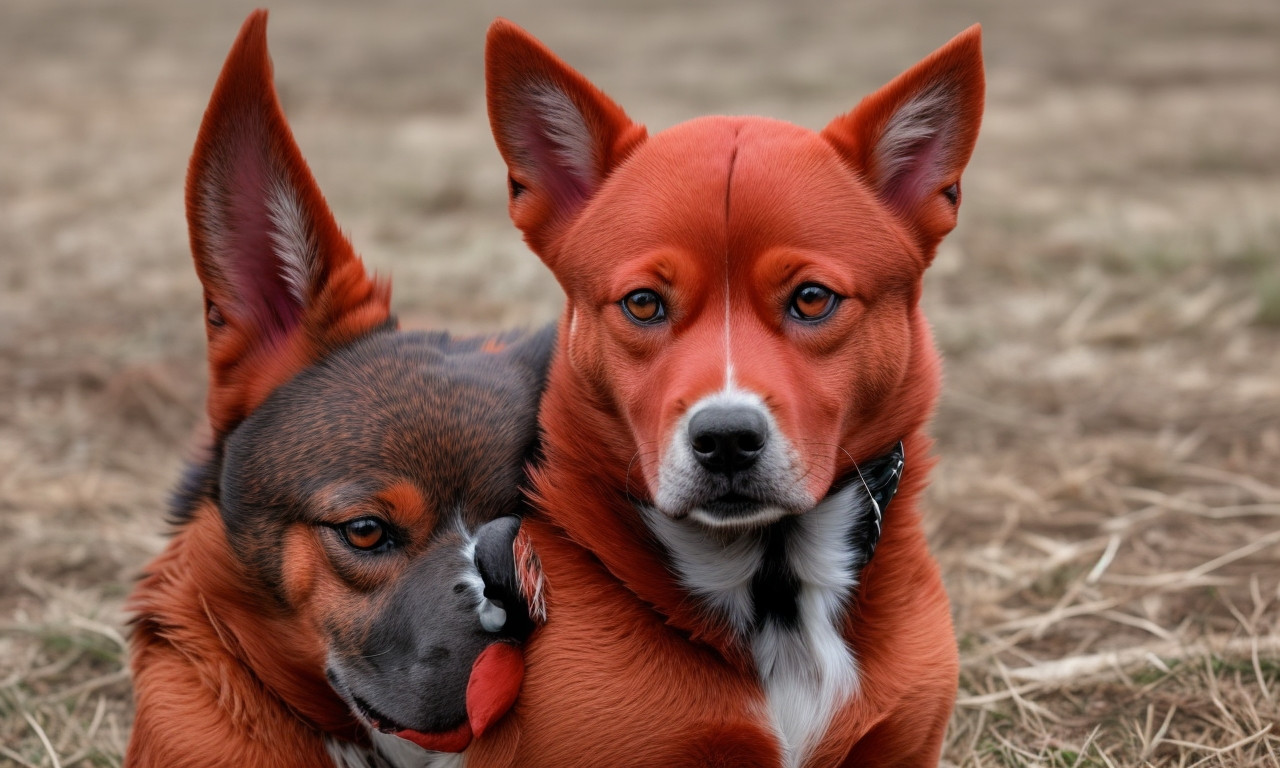
The Red Heeler, also referred to as the Australian Cattle Dog is an industrious breed initially developed for guiding cattle across distances, through rugged landscapes. Here are three standout characteristics that distinguish this breed;
Does the Red Heeler Make a Good Pet?
The Red Heeler, also known as the Australian Cattle Dog, is a breed that is well-loved for its intelligence, energy, and loyalty. Originally bred for herding cattle over long distances across rough terrain, these dogs are immensely hardworking and thrive when they have a job to do. But what about their suitability as a pet in a home environment?
When considering whether a Red Heeler makes a good pet, several traits and factors must be taken into account. On the one hand, their loyalty and protective nature can make them excellent companions, forming strong bonds with their owners and families. Their intelligence means they are quick learners and can be trained to a high standard. Red Heelers are also generally robust and healthy dogs, which makes them a less worrisome choice for people concerned about potential medical issues.
However, it is precisely because of their impressive intelligence and energy levels that Red Heelers can be a challenging breed for some owners. They require a lot of mental and physical stimulation. Without adequate exercise and activities, they may develop undesirable behaviors such as excessive barking, chewing, or even herding children or other pets. These behaviors are a manifestation of boredom and the dog’s instinctual drive to work.
In terms of history, these dogs come from a pivotal background that involves crossbreeding with dingoes to achieve their endurance, resilience, and herding abilities. Understanding this history is crucial because it sheds light on why Red Heelers have such a strong work ethic and high energy levels.
For experienced dog owners who lead an active lifestyle and can commit to engaging their pets in regular exercise and training, Red Heelers can be a rewarding choice. They can excel in dog sports such as agility, obedience, and flyball, which can be a great way for them to burn off energy and fulfill their need for mental stimulation.
In a family setting, they can be good with children if socialized properly from a young age, though their herding instinct should be monitored to ensure play remains safe and positive. Furthermore, they tend to be cautious of strangers and can be excellent watchdogs, but this also means they require proper socialization to ensure they do not become overly protective or aggressive.
Overall, a Red Heeler can make a wonderful pet for the right person or family. Prospective owners should be prepared for a high-energy, intelligent dog that will need more than just a daily walk around the block. With the right training, socialization, and plenty of activities to keep them mentally and physically engaged, Red Heelers can indeed be loving and lovable pets who are deeply devoted to their families.
Conclusion

The Red Heeler, also known as the Australian Cattle Dog is a breed renowned for its smarts, stamina and faithfulness. Its origins and selective breeding have shaped it into an fiercely loyal pet.
The backstory and traits of the Red Heeler paint a picture of a breed molded by necessity—an embodiment of adaptability and tenacity. The ultimate takeaway is that the Red Heeler stands out as a breed excelling in its duties while being flexible enough to meet the varied challenges of contemporary life. For those to dedicate the time and effort needed to nurture and teach a Red Heeler the payoff is an capable companion suited for an active lifestyle, with the ability to forge an unbreakable bond, with its human family.
